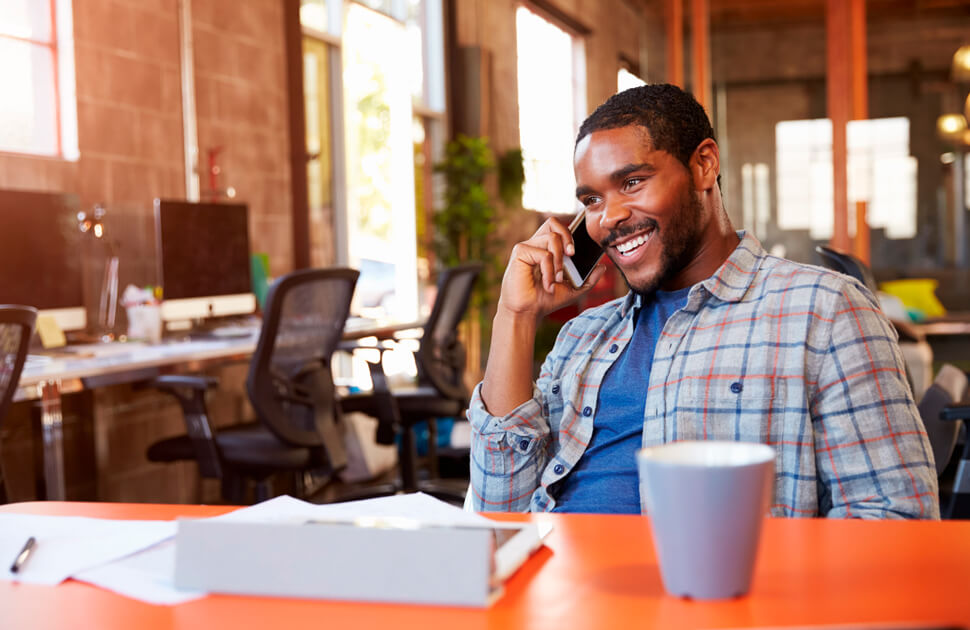Currently, designing office spaces is not an easy task. Companies are increasingly complex in terms of their functions and operations. Those in the front line of workplace design are focusing on anticipating the constantly evolving needs of organizations; while creating a coherent brand environment that embraces innovation, culture and corporate vision.
Innovation, in particular, is a key focus area for many companies. With rapidly evolving technologies and a demand for wellness-based design, organizations are increasingly aware of the importance of investing in properties that are flexible and change-able; properties that improve employee performance and their well-being and happiness in the workplace. This means designing dynamic spaces centered on the human being and leaving space for growth and new technologies as they arrive.
The challenges facing companies today have led to transformations in the way employees interact and operate in work environments. These are no longer simply working in unique spaces, but the workspaces are designed to meet business needs, with the aim of improving performance and productivity, attracting new talents, improving well-being and inspiring new ideas.
Trends in office design for 2020 are a reflection of modern business culture. By looking at tomorrow’s trends, you can understand where businesses are now and where they want to be when the future comes.
What Are The Trends In Office Design By 2020?
1) Dynamic Flexibility
A few years ago, the trend of dynamic spaces began to emerge, introducing people into multifunctional workspaces. These included indoor-outdoor access through mobile dividers, television and video equipment, and step-style seats, among others. Basically, these spaces were designed to begin to meet the needs and applications of an increasingly multidisciplinary business world.
The next phase of this trend is dynamic flexibility, which incorporates a completely new generation of mobile, multifunctional, lightweight and ergonomic elements, designed to fit any space and purpose.
This trend is on the way to becoming the new normal as work environments continue to shift towards more human-centered, collaborative and active spaces led by innovation.
Now it is more important than ever to have an integrated workplace that can adapt to business needs in real time. As the pace of business accelerates, the importance of dynamic and multifunctional workspace will become more necessary.
2) “Wooden” Offices
The wood is coming back. Millennials, currently the largest workforce in the United States, want to ensure that the organization they work for aligns with their pro-environmental and sustainability ideologies.
Wood is not only used for walls, floors or tables, but also provides a space with an undeniable character, which adds biophilic texture, lines and warmth to traditionally sterile office environments.
Another key feature is the use of linear wood panels and wood slat patterns to create the illusion of depth. This also attracts attention to important architectural and functional features, which are attractive and can help reduce noise pollution in high traffic areas and workspaces.
3) Community In A Remote World
It is no secret that we live in an increasingly digital world, and the business world is no exception. According to a recent study, 70% of professionals currently work remotely at least one day a week, and 53% telecommute for at least half of the week. That means that companies must reimagine and redesign office spaces to meet the changing needs and expectations of employees, in an increasingly remote world.
To adapt, companies are working with designers to create more welcoming and comfortable spaces that promote a sense of community, comfort and shared values.
4) Sustainability
Sustainable design is the integration of recycled, sustainable and ecological building materials into a space. It emphasizes energy efficiency driven by technology, environmental conservation and ecological compliance to establish a more harmonious relationship between nature and offices.
Sustainable design in its current form now has a full spectrum of certifications to focus on investment in building performance, as well as employee welfare. In addition, the growing phenomenon of biophilic design continues to take root in modern design. In essence, biophilic design is a design framework inspired by the natural world, which includes characteristics such as materials of sustainable origin, such as stone and wood, as well as living plants and vertical gardens, but also includes innovations such as biodynamic lighting and floors inspired by nature.
5) Modern Modular Spaces
Functional furniture is a key element to help employees stay creative, active and productive. This means that new study tables, standing desks, work benches and isolated telephone booths are developed and reinvented every day to help workers maximize their office time.
This trend is focused on the innovations that are emerging in the offices, which allows companies to work more intelligently, more efficiently and create an environmentally friendly workplace for employees.
6) Domestic Workspaces
Furnished kitchens, pots and baskets, cushions and carpets: no, employees are not at home. They are in the office. In an effort to create a more comfortable and homely work environment, the offices are turning to all aspects to make workers feel at home. The benefits of this design are twofold: first, the comforts create a more cozy and relaxed atmosphere for the employees who frequent the office. Space is, therefore, more satisfying. Secondly, these amenities attract remote workers to the office creating a space with which employees gets involved and excited, strengthening the dynamics and morale of the team.
In conclusion, the fusion of designs has the potential to revolutionize the way in which long-term office environments will be perceived. For now, changes in office design have just begun.
 Subscribe
Subscribe
 Ask for a demo
Ask for a demo

 4 min
4 min
